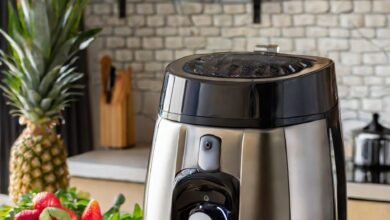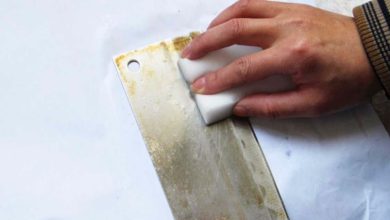Here are the best methods to disinfect and clean plastic cutting boards

Plastic cutting boards are kitchen essentials cherished for their resilience, cost-effectiveness, and simple upkeep. However, maintaining their cleanliness and guarding against harmful bacteria presents its own set of challenges. While bleach has long been the standard disinfectant, many seek gentler alternatives that don’t compromise effectiveness or expose them to harsh chemicals.
ADVERTISEMENT
Let’s delve into some of the finest methods for cleansing and disinfecting plastic cutting boards without resorting to bleach.
ADVERTISEMENT
Why Skip Bleach? Though potent, bleach’s chemical potency can pose risks to both health and the environment. Its improper use can release harmful fumes and cause skin irritation, while runoff can harm aquatic life. To ensure a hygienic kitchen without bleach, consider these alternative approaches:
ADVERTISEMENT
1. White Vinegar and Water Solution Harness the natural disinfecting power of white vinegar to banish bacteria and odors from your plastic cutting board. Mix equal parts white vinegar and water in a spray bottle. Liberally spray the solution over the board’s surface, allowing it to sit for roughly 10 minutes. Then, rinse the board thoroughly with water and pat it dry with a clean cloth. As the board dries, the vinegar scent will dissipate.
2. Hydrogen Peroxide and Baking Soda Paste Blend hydrogen peroxide and baking soda into a paste, achieving a thick consistency. Apply the paste to the cutting board, focusing on areas with stains or odors. After approximately 15 minutes, gently scrub the board with a brush or sponge. Rinse it with water and dry it thoroughly.
3. Lemon Juice and Salt Scrub Harnessing the natural antibacterial properties of lemon juice, this method effectively eliminates odors. Cut a lemon in half and generously sprinkle coarse salt over the exposed side. Use the lemon as a scrubber to cleanse the cutting board’s surface, with the salt acting as a gentle abrasive. After scrubbing, rinse the board and wipe it dry.
4. Tea Tree Oil Spray Renowned for its antimicrobial prowess, tea tree oil provides a refreshing scent while combating bacteria. Add a few drops of tea tree oil to a spray bottle filled with water, shake well, and spritz the solution onto the cutting board. After a few minutes, wipe it off with a damp cloth.
5. Dish Soap and Hot Water Maintain your cutting board’s cleanliness by regularly washing it with dish soap and hot water after each use. Employ a brush or sponge to remove any residue, then rinse the board thoroughly with hot water and dry it with a clean towel. This simple routine helps prevent bacterial buildup.
6. Regular Sanitization Routine Regardless of the method chosen, establish a consistent sanitization routine for your plastic cutting board. Clean it after each use and conduct a more thorough disinfection at least once a week, or more frequently for heavily used boards.
By incorporating these methods into your kitchen routine, you can ensure that your plastic cutting boards remain clean, safe, and free from harmful bacteria.




